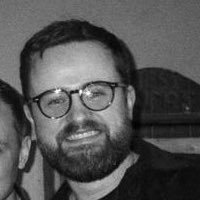Top Three Highlights from the Viral Vectors for Vaccines and Gene Delivery Meeting
The event was organized by the Knowledge Transfer Network, the Future Vaccine Manufacturing Research Hub and Future Targeted Healthcare Manufacture Hub.
Moiz detailed his top three highlights from the talks that he attended at the event. As he explains:
“My personal goals for the event were to learn more about the challenges the industry is currently facing and to learn how they are being addressed by different companies in the space”.
Collaboration is key to unlocking the full potential of advanced therapies
One of the themes that quickly became evident at the event was just how important forums such as these are in helping industry unlock the full potential of these therapies for patients and for maximizing their outreach.
Collaboration between government agencies such as Innovate UK, technology providers and therapeutic developers is of huge benefit for the industry. Especially when it comes to tackling some of the challenges outlined in the talks highlighted below.
Three talk highlights for me were:
1. Tarik Senussi from Gyroscope Therapeutics spoke about their work over the last 12 months as a small team optimizing their AAV process developed by a contract manufacturing organization. This involved removing some downstream purification process steps that could potentially bring risk and added complexity to manufacturing - an example being the clarification step after the bioreactor and moving to depth filtration.
Whilst doing process improvements they maintained high AAV recovery. Included in the talk was data behind the work and a comparison product characterization table to prove the equivalence between the old and new versions of the manufacturing process.
2. Philippa Rice from Cell and Gene Therapy Catapult spoke about Lentiviral vectors and process analytical challenges - this is also a key topic for us at Synthace.
Philippa presented some great work on metabolomics for diagnostic analytics, raman spectroscopy for predictive analytics and general technologies for predictive analytics. These give process insight during in-line, on/at-line measurements, as potential solutions to challenges the industry is currently facing.
3. Yasu Takeuchi from UCL spoke of the different producer cells lines and the challenges of three methods; transient, stable inducible and stable constitutive - in particular regarding yield, scale up and batch-to-batch consistency. It was interesting to see the advantages of stable constitutive producer methods - such as continuous and cleaner harvest possibilities. However, with less variation between batches comes the challenge of low yield which we’ve still to solve.
Making viral vector process development easier
At Synthace we’re working to lower the barriers to development to help scientists overcome the challenges outlined in the talks mentioned above with our cloud-based platform.
We've built a user-friendly, hugely powerful software platform to give biologists sophisticated, flexible, and integrated control over their lab hardware. In a recent case study, Oxford Biomedica used the Synthace platform to perform a Design of Experiments optimization of their lentiviral transfection/transduction process. This resulted in a 3 to 10-fold increase in vector titer upon transduction. It also made the process more robust by reducing pure error by 81%, and more efficient by reducing consumable use by over 30% and improving time-saving by 83%.
This enables experiments and lab workflows to be rapidly automated, and data from those workflows to be automatically integrated, linked to their experiment and analyzed in almost real-time.


